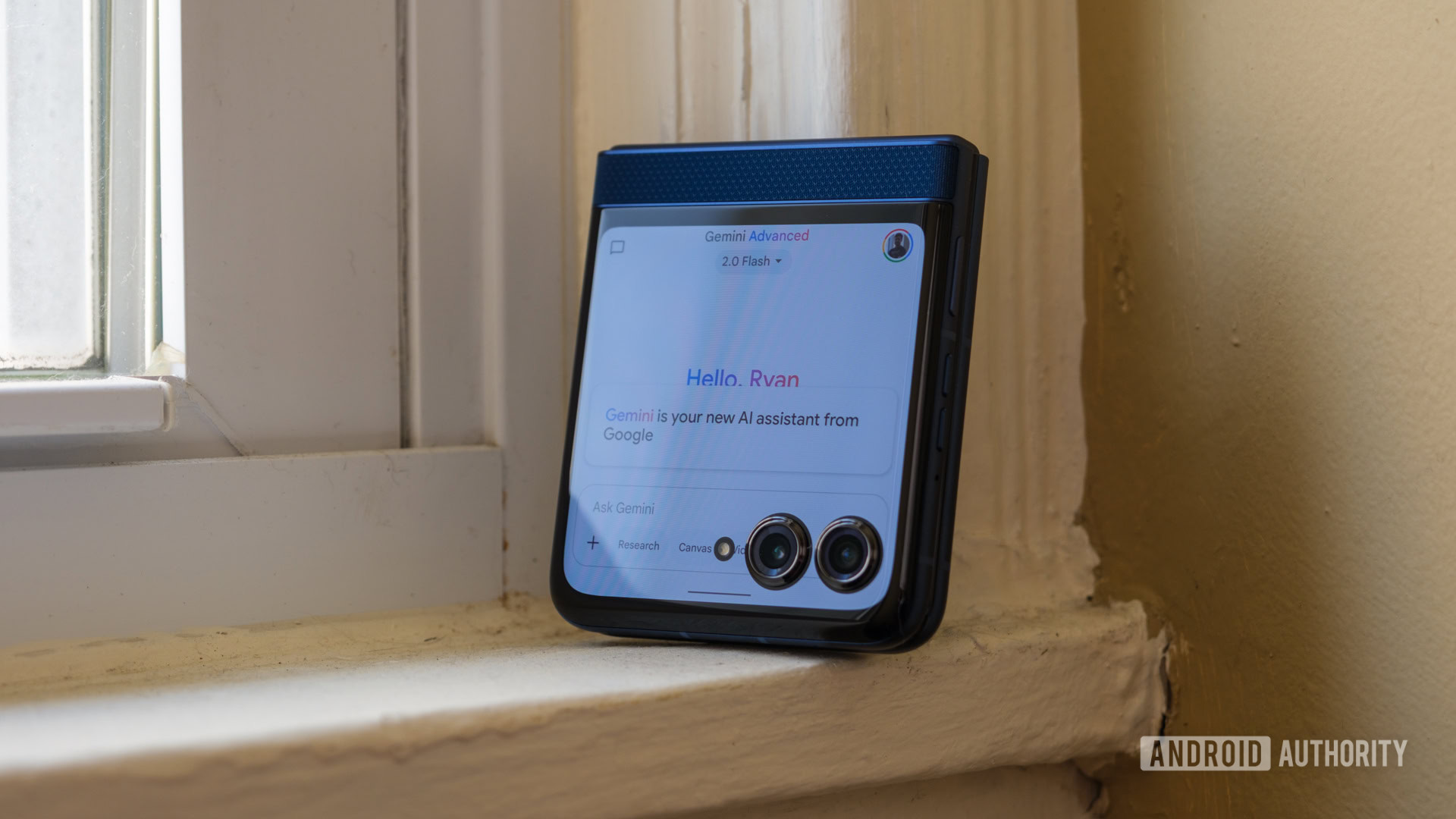Trust, Trace, Repeat: The One Rule That Makes AI Worth Listening To
It begins, as most things now do, with a question. Not always a profound one. Sometimes it’s simply where to eat. What to say in an email. Whether the scan means anything. The machine answers—fast, certain, eerily polite. And in the silence that follows, when the screen dims and the answer lingers, a quieter question surfaces. Less technical. More primal.
Can I trust this?
There’s too much of it now—AI, machine learning, prediction engines. It fills the corners of modern life. It recommends. It filters. It whispers suggestions beneath decisions we think we’re making ourselves. It pretends to advise. It pretends to know. And for most of us, who don’t build the models or audit the weights, trust is all that remains.
Not trust in the system. Not even trust in the outcome. Something older. Something pre-verbal. A flicker in the spine when the answer comes back too smooth. Recognition. Repetition. A pattern-memory buried beneath logic. You don’t need to know how the model works to feel when something’s off. You just need to notice it. And most people do—at least once. Then they look away.
Because it’s fast. Because it’s clean. Because the answer sounds right. That’s the trick. It doesn’t need to be right. It only needs to sound like it could be. Enough fluency, and it doesn’t matter whether it’s guessing. It doesn’t matter whether it’s hallucinating. You’ll believe it. Or worse, you’ll act on it.
There is a rule for that. Plain. Persistent. Older than silicon. Older than language. A rule that predates machines and survives them. One that doesn’t care how confident the output is. One that cuts straight through tone, polish, authority, presentation. One that says: if you can’t see how it got here, don’t trust it. If you can’t follow the shape of the answer back to the shape of the input, don’t move forward.
Because it might be right. But it also might be wrong. And if you can’t tell the difference, it was never your answer to begin with.
Trust only what you can trace.
Or put differently—if you can see how the result came to be, if you can walk it backward, if the shape of the output echoes something in the input, then it becomes, at the very least, accountable. Not correct. Not perfect. Just accountable. Just something you can point to and say: this is why.
That kind of trust doesn’t live in the answer. It lives in the path. And the path isn’t always obvious. You have to look. Not blindly. Deliberately. Start with the source. Who sent the file? Where did it come from? Was it passed to you, or did you pull it yourself? Are the hands it came from clean?
Then the chain. Check the links. Emails, timestamps, change logs. Did it jump systems? Was it renamed? Was it edited along the way? What does the metadata say? Who touched it, when, with what machine? Even filenames speak—versions, initials, old labels someone forgot to scrub. Nothing is too small. Every fragment might be the thread that unravels the rest.
This isn’t paranoia. This is protocol. A clean answer from a dirty trail is still compromised. And an answer with no trail at all? That’s not a result. That’s a performance.
Hesitate.
Because if you can’t see what brought it to you, then you were never supposed to. And something else may have moved it into place.
I. The Silence Inside the Box
I. The Silence Inside the Box
The problem isn’t just the answer. It’s the gap. The space between the question and the reply. Quiet. Unaccounted for. Nothing visible. Nothing offered. Just a pause, and then something that sounds like confidence.
You ask, and something comes back. But it doesn’t tell you why. Not how it got there. Not what it discarded. Not what it weighed. No trail. No source. No working shown. Unlike a calculator that stacks its math, or a search engine that hands you the links, AI doesn’t explain. It doesn’t reason. It doesn’t test for truth.
It predicts.
It doesn’t know what you asked. It just knows what other people probably meant when they asked something like that. It doesn’t know what it’s saying. Only what sounds like the sort of thing someone might believe.
This is why it’s called a black box. You feed it a prompt. Something comes out. What happens in between isn’t yours to see. It isn’t even sure it saw anything.
And so the burden shifts.
We don’t need to read every weight or parse every dataset. But we do need to know what kind of thing we’re dealing with. Not whether it’s perfect. Not whether it’s right. Just whether it holds. Whether it behaves in a way that makes sense. That survives contact. That repeats.
Just enough to follow.
Just enough to trace.
Just enough to trust.
II. Three Principles Behind the Rule
“Trust what you can trace” rests on three legs. Each one simple. Each one easy to miss. Lose any one of them, and you lose the ground under your feet.
Consistency. Traceability. Context.
Together, they form the frame of judgment in systems that no longer explain themselves. A test. A gut check. A way to know when the voice in the machine is echo, and when it’s empty.
-
Consistency
You ask it today: What’s the capital of Canada?
It says Ottawa.
You ask again tomorrow.
It says Toronto.
That moment? That pause you feel? Not a crash. Not a bug. Just a fracture. Something small, but wrong. Something you can’t name, but notice anyway.
Trust begins there. In the holding pattern. In the expectation that the same input gives the same output. Ask once, ask twice—the shape should hold. Adjust the question, and sure, the answer can shift. But it should shift with you. Logically. Coherently. Not wildly. Not randomly.
If it doesn’t, the model isn’t thinking. It’s bluffing. Guessing with confidence.
Or worse—hallucinating stability in a place it doesn’t understand.
You wouldn’t trust a doctor who changes their diagnosis every hour.
You wouldn’t trust a friend who rewrites their story every time you ask.
Don’t trust a machine that does the same.
-
Traceability
Where did this come from?
That’s the question. Not what it says, not how fast it said it—but why. What led to it. What pattern. What signal in the input woke up this response.
In critical systems—medicine, finance, security—traceability is not optional. It’s survival. If an AI flags a tumor, you need to know what it saw. Which pixels. Which region. What threshold it crossed to sound the alarm.
In softer domains—recommendations, rankings, content curation—it still matters. If the connection between what you gave it and what it gave back feels arbitrary, it probably is.
If it feels like a guess, it probably was.
And if there’s no visible root—no anchor you can point to—then it’s not logic. It’s not intelligence. It’s noise.
Ask yourself: can I follow this back? Can I find the spine of the answer buried in the input?
If not—stop.
You might be looking at something that knows how to sound right, without knowing anything at all.
-
Context
And finally, the question most people skip:
Was this thing built for this?
It matters. Because not all models are made for all tasks. A chatbot might draft a legal clause. Might mimic the tone. Might even drop a Latin phrase to impress you. But sounding legal isn’t the same as being legal.
Unless it was trained on statute. Case law. Precedent. Unless it understands structure and consequence and context—it’s not doing law. It’s doing theater.
And the same holds everywhere. Language isn’t meaning. Tone isn’t truth. Flow isn’t function.
You wouldn’t ask your dentist to fly a plane.
You wouldn’t ask your microwave to do your taxes.
Don’t ask your AI to step into shoes it was never built to fill.
III. The Rule in Practice
A student asks for help with math. The answer comes back quickly. Steps intact. Logic tight. The numbers flow. On the surface, it looks right. But the final result is off. The calculator proves it. They walk it backward—line by line—and somewhere in the middle, the model made up a rule. Invented a pattern that didn’t exist. It didn’t teach. It reflected. It echoed something that looked like understanding but wasn’t.
That’s the moment the student learns: this isn’t a teacher. It’s a mirror. Sometimes useful. But only if you already know what to look for.
Elsewhere, a company filters resumes with AI. Same candidate. Same experience. Two versions of the document—one clipped, the other dressed up. Sparse versus stylish. One gets flagged. The other doesn’t. Same content. Different wrapper. Different outcome.
The signal is clear. The model isn’t reading meaning. It’s reacting to surface. Style outweighs substance. And when that happens, trust breaks. Not because the system is malicious—but because it never learned the difference.
And somewhere else, a user feeds an article into a summarizer. What comes back is elegant. Tight. Well-phrased. But when they check it against the original, something’s wrong. Context is gone. Tone has shifted. Not wildly. Just enough to move the meaning. It doesn’t feel like compression. It feels like erasure.
That’s the danger. When the path disappears, when the reasoning behind the output can’t be seen—correction becomes impossible. And what should have been a summary becomes a distortion.
IV. But What of Art?
Not everything AI does is meant to be factual. Some are built to improvise. To speculate. To create.
In those spaces, the rules bend. You don’t expect the same image twice. You don’t need precision—you need alignment. The same prompt, the same mood, the same shape of thought—should lead to a result that fits. Not identical. Just coherent.
Even in fiction, the path still matters.
If the image is original, can it show its lineage?
If the poem is brilliant, did it borrow lines?
Did it lift without naming its source?
Because even creation has its boundaries. Even novelty has its roots. AI doesn’t get a pass just because it surprises you.
Not because of law.
Because of trust.
And trust—even in art—is earned.
V. Final Thoughts: The Rule That Outlasts the Model
You don’t have to be an expert. You don’t need to read the weights. You don’t need to audit the model, or inspect its layers, or understand how each neuron fires. Most people won’t. That was never the point.
You’re still responsible.
Because AI is already here. In classrooms. In hospitals. In inboxes. In legal briefs. In reports that get signed without being read. In summaries that decide what matters. Quiet. Present. Woven in.
And the only way through isn’t fear. It isn’t blind faith. It’s literacy. Judgment. Discipline. The kind you don’t need a PhD to carry. Just a habit. A question. A pause.
Does this make sense?
Can I get the same answer again.
Can I follow it back to where it started.
Was this thing built to do the thing I just asked it to do.
If the answer is yes—maybe.
If not—stop.
Because trust doesn’t live in polish. It doesn’t live in tone. It doesn’t care how smooth the interface is or how fast the result shows up. None of that matters.
What matters is the trail.
What matters is that you can trace it.
That you can repeat it.
That you can hold it up to the light and it doesn’t disappear.
AI isn’t a threat. But it isn’t a priest.
It doesn’t get obedience just because it speaks.
It’s a tool. That’s all it is.
And a tool earns its place by what it can show. Not what it says.
You can trust what you can trace.
The rest belongs to shadows.
VI. Summary
This isn’t about fear. It isn’t about shutting the door. It’s about knowing when the door was opened, who opened it, and what walked through. The machine doesn’t care if you understand. It only cares if you obey. That’s the trap. Fluency is not the same as truth. And prediction is not the same as knowing. If you trust the shape of the answer without ever seeing its spine, then the voice you’re listening to isn’t speaking to you—it’s speaking past you. The rule holds. Always. Trust what you can trace. Everything else can wait. Or burn.













